Tech News
-
Bitfenix Enso Mesh @ TechPowerUp
There is an interesting thing about cases and how they are designed. Sometimes the designers come up with some very unique ideas that are welcome additions to the market while other times you get a copy of a copy of a copy. Sadly, the later of these two options is what we see most of the time.
The Bitfenix Enso Mesh is a really sharp looking case, it features tempered glass, a full mesh front panel and stylish white design and interior. However, it also looks like they combined features from three other cases and just applied those to their base chassis.
For instance, I look, at the front panel and see a Phanteks side panel, I look at the side and see and Antec or Silverstone design. And, now that I think about it, the SilverStone SST-PM02 Primera might be the case I am thinking of.
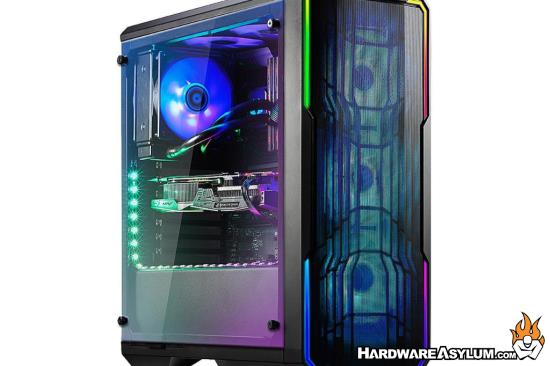
The original Bitfenix Enso managed to impress with solid quality and cool looks. The Enso Mesh is built around the same base, but with much-improved airflow and accessibility to the front fans, which gives you more freedom to customize your cooling setup.
I think the Mesh is speaking mostly to the improved cooling over a totally new design.
-
COMPUTEX 2019 Ended Successfully The Heat of Gaming Is Extended to the Battle of High-Performance Computing
Yay! another Computex in the can/bag/history books whatever you wanna say. This has been a pivitoal show for me and I have seen plenty of changes over the years. In fact the first time I attended the show it was really quite tame however, the years that followed had more booth babes / show girls and the displays started to get larger.
This was when the show stopped being 100% about sales and more about marketing and brand reconition. This isn't always a bad thing but does change the dynamic and what you can expect from attending.
Below is a press release from the Computex folks talking about the show. I'll be finishing my show coverage this following week and should have a total of 19 articles posted when I am done. I say 19 but, it might be less
 Despite there being only AMD stuff as "new" there was some fun stuff to see.
Despite there being only AMD stuff as "new" there was some fun stuff to see.------------------------------------
June 1, 2019 – Taipei, COMPUTEX 2019 closed today (June 1) with a huge success. In the last five days, 42,495 international buyers from 171 countries flooded into the show, a 0.5% growth from the previous year. The top 10 buyer countries are, namely, China, the US, Japan, South Korea, Hong Kong, Thailand, Singapore, Germany, Malaysia, and India. Once again, COMPUTEX established the role of a leading ICT tradeshow that connects businesses along industry supply chains and opens up infinite possibilities in the tech ecosystem. In addition, InnoVEX 2019 attracted 18,251 visitors in 3 days, a 3% from the previous year, showing significant startup dynamics. During the show, 76 heavyweight buyers from around the world participated in 470 sessions of one-on-one procurement meetings. Furthermore, InnoVEX invited 45 international venture capital firms, including Samsung NEXT, LINE, Delta, China Trust, and Israel's largest fundraising platform, OurCrowd, to match with 69 startups.
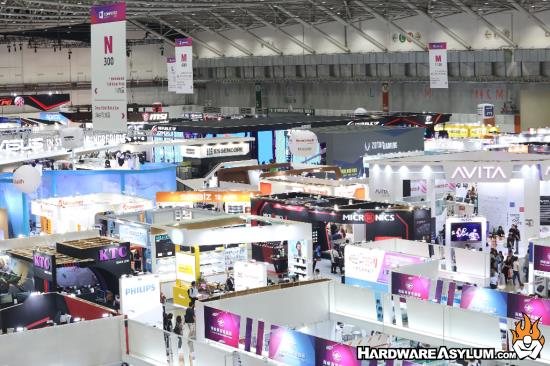
Myriads of Gaming Devices Launched; New-Generation High-Performance Products Glowed
With the advancements and introduction of new AAA games based on generous production budgets and marketing cost, PC manufacturers are taking up challenges to break technological boundaries. The development of high-performance multitasking processors, graphics cards, memory, and high-end peripherals is indicating that these brands are catering to professional eSports players and enthusiastic gamers, meeting their demands and expectations for immersive gaming experiences.MSI’s flagship GT76 Titan gaming laptop showcased at COMPUTEX was armed with an Intel® Core™ i9 processor that can be overclocked to 5.0GHz across all 8 cores, while its extreme cooling capability handles the most extreme heat, granting the new GT Titan its overclocked desktop performance. ADATA showcased its XPG ORB that presents all XPG products and offers immersive experiences. ASRock introduced its Phantom Gaming motherboards while its premium Z390 Phantom Gaming X received the most attention at COMPUTEX for being the first motherboard in the world to support Wi-Fi 6 (802.11ax), providing improved thermal result and superior performance.
Inspiring eSports Games Held for Charity on the International Stage
As the first charity eSports event held at COMPUTEX, ZOTAC CUP Fight for Charity LOL Tournament ended today. A total Grand Finals prize pool of US$100,000 will go towards charities including Esports Foundation in the US, Gaming Aid in Germany and Make-A-Wish Foundation. ZOTAC successfully made positive impacts and give back for a good cause.G.Skill OC World Record Stage 2019 and OC World Cup 2019—organized by G.Skill and sponsored by Samsung and Intel—ended with championship taken by Alex@ro from Romania. The 8th G.Skill OC World Record Overclocking Competition invited 15 overclockers to represent the major e-sports vendors to demonstrate the powerful hardware performance on the spot. And in addition to the overclocking contest, G.Skill Extreme Mod Stage 2019, on the other hand, invited 10 teams of talented system mod builders to bring their creativity into full play at COMPUTEX and presented 11 of the world’s most creative and special system mods.
Promising Startups From Around the World Gathered at InnoVEX, Pitch Competition Awards Delivere
As a global indicator, InnoVEX is a platform that encourages startups to show their unlimited creativity and offers publicity opportunities. Every year at InnoVEX, a pitch competition is held. This year, the total award reached US$420,000. The grand prize worthy of US$30,000 was taken by MedFluid. Omni Eyes, Mind & Idea Fly, Onesoftdigm, MedFluid, and PurCity left with Startup Terrace Awards and US$ 60,000. MTAMTech was awarded US$10,000 by Taiwania Capital and Ganzin technology received US$10,000 award by Qualcomm.For the first time, a CEO Keynote was held with COMPUTEX pre-show International Press Conference with AMD President & CEO Dr. Lisa Su as the keynote speaker. Dr. Lisa Su addressed how the next-generation of computing will drive innovation. She also invited Microsoft, ASUS, Acer and close to 20 industry partners to present the computing industry ecosystem. Leonor Lin, TAITRA Executive Vice President said, “This year, we have seen various innovative applications driven by the advancements of AI, IoT, and 5G. The technologies to process a massive amount of data and high-performance computing will be one of the most important driving forces to sustain the growth of the tech industry in the future. COMPUTEX 2019 has fulfilled its promise to build global tech ecosystems. As the scope of exhibitions and the number of participants set new records, we expect COMPUTEX to keep leading technology businesses forward to build global technology ecosystems that bring prosperity to all.”
-
AMD announces next-generation products at Computex 2019
What an amazing KeyNote from AMD during Computex 2019. By the time I get to posting this bit of news I'm sure EVERYONE will have gotten all the juicy specs. If not, head on over to Digitimes, they have captured everything you'll need to know.
AMD has announced high-performance 7nm-based computing and graphics products. During her Computex keynote today, AMD president and CEO Lisa Su announced a range of products including the new Zen 2 core, the 3rd Gen Ryzen desktop processor family, the X570 chipset for socket AM4, RDNA gaming architecture, and the 7nm Radeon RX 5700-series gaming graphics card family.
The Zen 2 core widely outperforms the historical generational performance improvement industry trend, up to 15% estimated instructions per clock (IPC) uplift over the predecessor Zen" architecture, according to AMD. The Zen 2 CPU core powering the next-generation Ryzen and EPYC processors also includes design improvements including lager cache sizes and a redesigned floating point engine.
On a related note I'll be posting my own take on the announcement shortly.
-
LIAN LI Launches New Stylish BORA Digital Fans
MAY 20th, 2019, Taipei, Taiwan – LIAN LI Industrial Co. Ltd., a world leading manufacturer of aluminum chassis and peripherals, is proud to unveil the latest addition to its family of well-received RGB fan with the BORA Digital. Following the great success of the BORA and BORA Lite cooling fans, the price competitive BORA Digital is here to dominate in style with 3 frame finishes, built-in 12 addressable LEDs customizable via a RGB controller (or motherboard), and one of the most silent performances in the field, thanks to its adjustable speed and fluid dynamic bearings.
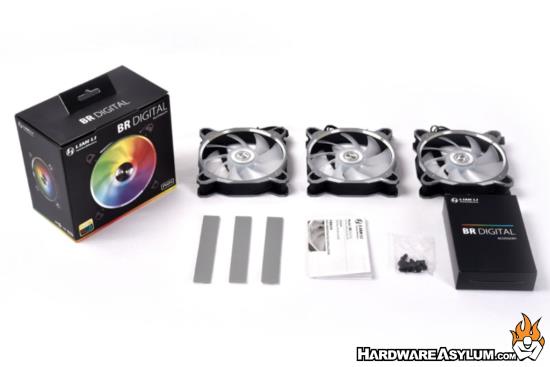
A Revolutionary Style
At last a fan that ticks all the boxes for gamers and enthusiasts alike is here, thanks to LIAN LI and the BORA Digital, an addressable RGB 120mm system fan that stands out, is efficient and stays silent. Available with frames in Silver, Space Grey and Black, the BORA Digital comes ornamented with an elegant LIAN LI logo CNC milled in aluminum at the center of the fan. Surrounding the logo, the built-in 12 addressable LEDs are tactically located to elevate the RGB experience to the next level and let the user truly customize its computer case’s style. At an MSRP of $59.99 USD, the BORA Digital includes a set of 3 fans, a controller, power cables, daisy chaining cables as well as an LED hub.16 Lighting Modes and 9 Lighting Speed Levels via an RGB Controller
A chassis is only as good looking as how it is lit, and the BORA Digital offers all the lighting effects one could desire. Customizable via an exclusive controller, enthusiasts can switch between 16 unique lighting modes and 9 progressive lighting speed levels. Because sometimes words are not enough, here is a video to experience first hand the modes available:https://youtu.be/e2Q3p-zXJSsAttention to detail is everything, that is why perfectionist will be happy to know the BORA Digital is compatible with their favorite LIAN LI STRIMER 24-pin RGB cable for a synchronized and harmonious lighting effect, as well as with a wide variety of motherboards LED management software such as the ASUS AURA Sync, GIGABYTE RGB Fusion, MSI Mystic Light Sync, and ASRock Polychrome Sync.
Unbeatable Silent Cooling Solution
LIAN LI made sure to design the BORA Digital to perform as quietly as possible. Firstly, rubber pads are located on all contact points to prevent unnecessary vibrations that may steer the gamer’s attention away from his intense gameplay. Secondly, the BORA Digital fan blades are mounted on fluid dynamic bearing which keeps friction to a minimum and provides a smooth spinning experience even at high revolution. Lastly, the fan speed can be adjusted as needed from as low as 900-1800 RPM with 19.4-29 dBA for the quietest experience. Make your PC comfortable to be around, keep its noise down with the BORA Digital.The MSRP of BORA Digital is $59.99 USD, which includes a set of 3 fans, an RGB controller, power cables, daisy chaining cables as well as an LED hub. For more information of the LIAN LI BORA Digital fan, see the official product page here: http://www.lian-li.com/bora-digital/
-
MSI Lighting Graphics cards, a trip down memory lane @ Guru3D
The MSI Lightning was really the first purpose built video card for overclocking. It always featured a custom cooler, factory "hot clock" and in most cases a revised design that allowed it to run better at the higher speeds.
It would seem that at Computex MSI will unveil a 10th anniversary edition of the 2080Ti Lightning and I hope it lives up to the hype.
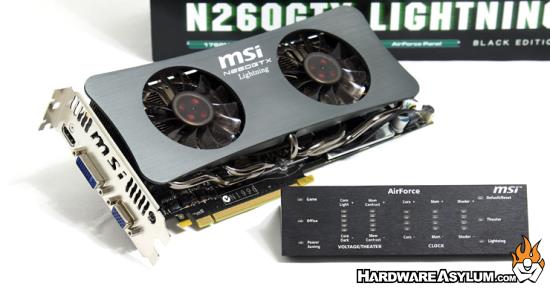
At Computex 2019 starting in a week or two, MSI will release a 10th Anniversary Lighting edition of their graphics cards. Ten years of releasing graphics card made for the more enthusiast crowd as well as overclockers., Beefed up VRM designs, supporting overclocking software that could push the card a bit more (even despite NVIDIA did not always like that), yeah it has been a wild ride.
Maybe one of the biggest issues with the Lightning (and other purpose built video cards) is availability. Mfgs are timid when it comes to building these expensive cards due to the increased costs and reduced margins. Of course the biggest issue on top of that is the consumer and how the market has shifted from actually wanting to build a PC to "what the 'F---' is a PC?"
You also have to factor in pressure from Nvidia to "lock the chips down" to prevent costly RMA returns (again because of consumers) or just to flex their market dominance.
Guru3D has all of the MSI Lightning cards shown in a single article and to be honest it brings a tear to my eye.
-
NZXT HUE 2 Ambient Lighting Kit v2 Monitor Back Lighting Kit Review @ APH Networks
RGB lighting is all around us, in our watches, in our monitors and even in our cars. Well, now it can be behind your monitor just like what that TV maker did several years ago.
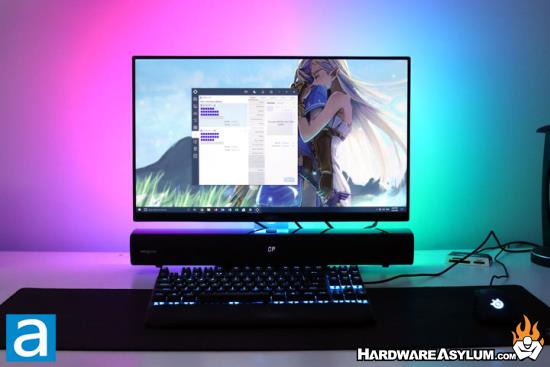
The NZXT HUE 2 Ambient Lighting Kit v2 is an excellent bias lighting option made premium for its immersion capabilities.
BTW, this is basically a RGB lighting kit that is sized for popular monitors and will sync with your programs to give you some ambient light to make things a little more immersive. I cannot diss, the effect is really cool and a nice way to adapt a standard RGB control box to do something more than blink.
-
Micron Memory Sets New DDR4 Overclocking World Record
Boise, ID – May 16, 2019 – Ballistix®, Micron’s leading global brand of gaming memory, today announced that its Elite DDR4 3600MT/s memory was used to set a new overclocking world record for the fastest DDR4 memory frequency at 5726MT/s. The world record was set on May 13, 2019 by Stavros Savvopoulos and Phil Strecker, members of the Overclocked Gaming Systems (OGS) team, using liquid nitrogen (LN2) cooling and the following system set-up:
- Intel® i7-8086K CPU
- ASUS® Maximus XI Apex Motherboard
- Ballistix Elite 3600MT/s 8GB module
The record-breaking frequency is posted on HWBOT and the valid CPU-Z screenshot can be found here.
“We were blown away by how surprisingly easy it was to overclock these Ballistix Elite DDR4 3600MT/s modules. Other modules we’ve overclocked can be temperamental and need to train at temperatures lower than the one required for stability; but we didn’t experience that with Micron’s E-die, which scaled much better with both extreme voltages and temperatures,” explained Savvopoulos. “Overall, it was easy enough to call the whole experience plug and play!”
“Breaking this world record reinforces our commitment to the enthusiast community. Our Ballistix product lineup provides the high-speed, low-latency and overclock headroom that gamers, content creators, and enthusiasts crave,” said Teresa Kelley, Vice President of Micron’s Consumer Products Group. “We will continue to focus on offering an exceptional high-performance memory and storage portfolio, with Micron, Crucial, and Ballistix engineers striving to deliver leading-edge technology that redefines the performance boundary.”
Ballistix Elite DDR4 3600MT/s modules are available in 8GB single modules and kits up to 32GB and can be purchased at Crucial.com, Amazon.com, or through select global channel partners. Ballistix DDR4 memory is Intel XMP-ready and has been optimized for the latest Intel and AMD® chipsets, and all Ballistix memory is backed by a limited lifetime warranty. For more information about Ballistix memory, visit http://www.ballistixgaming.com/.
Editor Note: Wow, this is really amazing and it is great to see Micron back in the top ranks for overclocking.
-
Cooler Master Announces Case Mod World Series 2019: Celebrating the Event’s 10 Year Anniversary
TAIPEI, TAIWAN, MAY 14, 2019 – The world’s biggest modding competition just got bigger. Celebrating a decade of dedication to the modding community, Cooler Master announces Case Mod World Series 2019 (CMWS19). With two different leagues and the largest cash prize in CMWS history, contestants can look forward to a total prize pool worth $24,000 USD. Cooler Master raised the winning pot to recognize the inspiring commitment that modders have shown over the last 10 years. This year’s event also welcomes up-and-coming talent to be a part of this community, and an opportunity to take their modding to the next level. #CMWS19 will consist of two separate leagues: The Master League and The Apprentice League. For more detailed information visit: www.coolermaster.com/cmws19
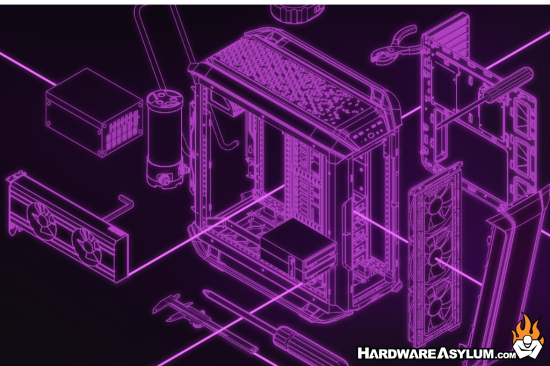
CMWS19 kicks off with a grand total prize of $24,000 USD up for grabs and a staggering $10,000 reserved for the best tower winner in the Master League - a tribute to the competition’s 10th Anniversary. The 2nd place winner will take $5,000, while the 3rd place winner will be going home with $1,000. The sole victor of the best Scratch Build wins $3,000.
The Master League of the competition is dedicated for established and experienced modders who will be crowned the best of #CMWS19. This category will host both technical wonders and artful masterpieces. Winners will craft their way into modding history, marking their name in the world’s largest modding competition.
The Apprentice League welcomes newcomers and up-and-coming talent looking to take their hobby of modding to the next level. Apprentices will have a different stage to compete in and be given the opportunity to gain the support they need. A total of 5 winners will be chosen from the Apprentice League and each winner will receive $1,000 USD worth of CM store vouchers and a chance to work closely with Cooler Master after the event.Register before June 15 at https://landing.coolermaster.com/cmws19/registration/
For more information, visit www.coolermaster.com/cmws19
-
Funky Kit Review - Ballistix Sport LT 64GB DDR4-3200 White Memory
Ok so I have seen quite a few different memory module colors from red memory, blue, black and silver. PCBs are usually green though some companies do black and I have a set of modules with a red PCB. (damn sexy if you ask me)
However, in all my years I don't recall a white memory module that wasn't modded by someone. Well, prove me wrong and say it to my face.
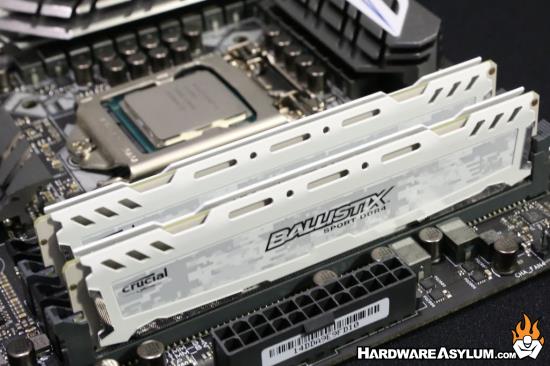
We have white memory! And.. from Crucial of all companies.

Today we will take a closer look at the refreshed line of already popular Ballistix Sport LT memory series. Besides higher frequency and lower latency, we can also see higher capacity memory modules. Ballistix made a reliable option for all users who need all at once so high memory capacity and high performance which will also work on all available platforms.
The claim from Funky Kit is "a high overclocking potential" and they didn't disappoint. In fact I was able to push similar modules well beyond the 4000Mhz reported in their review and hit 4266Mhz and 4533 with no trouble.
Be sure to check out our article "The Ballistix Sport 3200Mhz Crazy Overclocking Adventure"
-
Intel 10nm CPU to ship in June; 7nm product to launch in 2021 @ Digitimes
I find it ironic that the recently Intel roadmap leak showed Ice Lake as 10nm but no mention of a 7nm processor. Of course the leaked roadmap didn't have much for 2021 on it so it is likely that Ice Lake will get a die shrink.
At a recent company investors meeting, Intel announced plans to start shipping its volume 10nm client processor in June and shared first details on its 7nm process technology.
Intel disclosed its first volume 10nm processor, a mobile PC platform codenamed "Ice Lake," will begin shipping in June. The Ice Lake platform will take full advantage of 10nm along with architecture innovations. It is expected to deliver approximately three times faster wireless speeds, two times faster video transcode speeds, two times faster graphics performance, and 2.5-3 times faster artificial intelligence (AI) performance over previous generation products, the company claimed.
Intel continued that Ice Lake-based devices from its OEM partners will be on shelves for the 2019 holiday season. Intel also plans to launch multiple 10nm products across the portfolio through 2019 and 2020, including additional CPUs for client and server, Agilex-series FPGAs, Nervana-series NNP-I (AI inference processor), a general-purpose GPU and the "Snow Ridge" 5G-ready network system-on-chip (SOC).
Be sure to check out the new episode of the Hardware Asylum Podcast where we talk about the Intel roadmap leak. The show is more "fun" than informative so be sure to loosen up your trigger wires.

